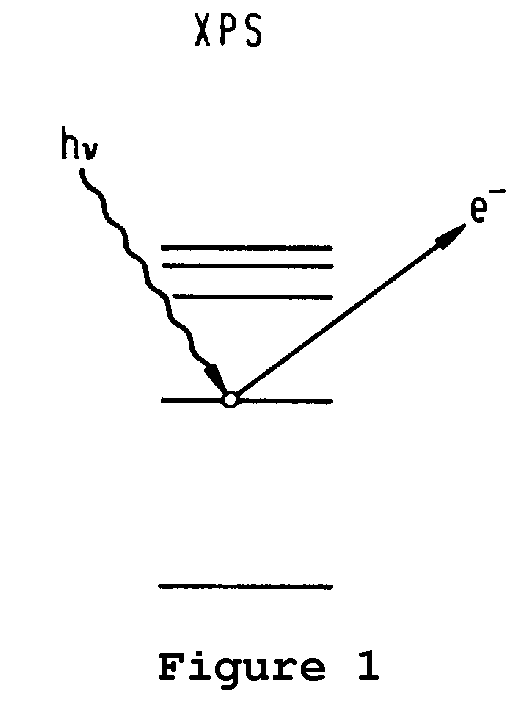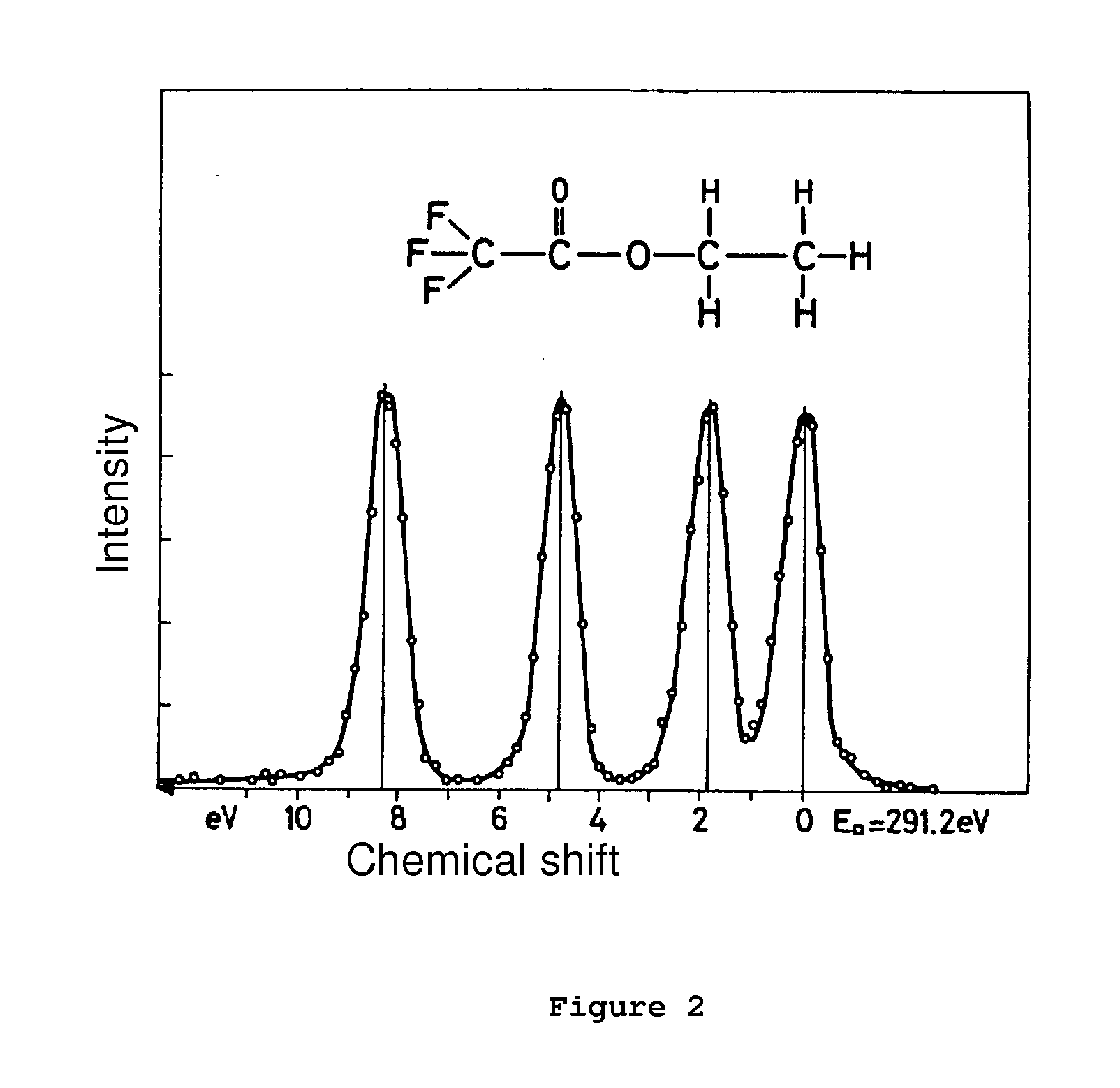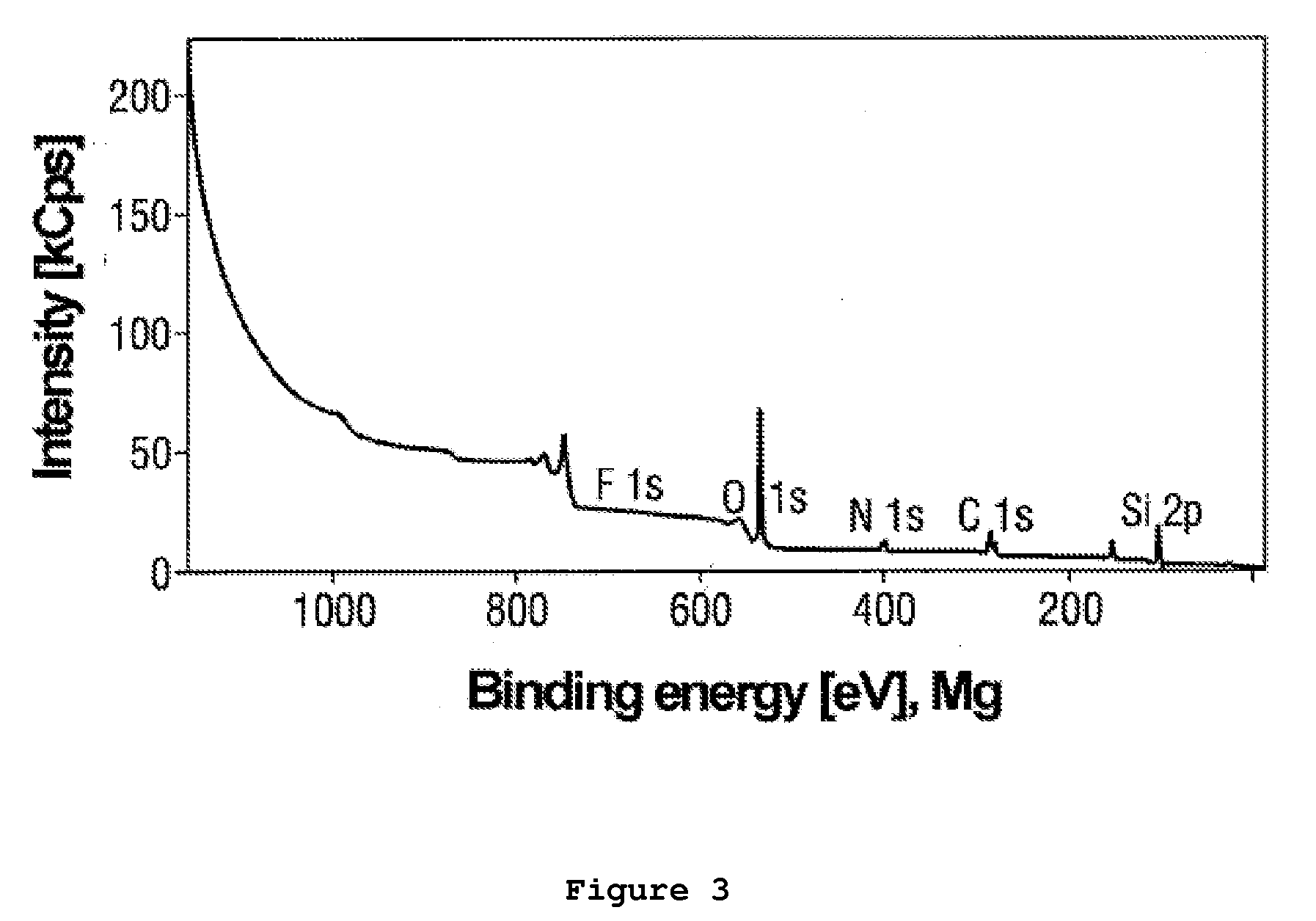Composite particles for use in oral hygiene
a technology of composite particles and oral cavity, applied in the field of functional composite particles, can solve the problems of mouth odour not being prevented over a prolonged period, commercial oral care products showing only a very limited long-term effect in the oral cavity, and only short-term effects of active substances
- Summary
- Abstract
- Description
- Claims
- Application Information
AI Technical Summary
Benefits of technology
Problems solved by technology
Method used
Image
Examples
example 1
[0165]40 ml of a 1.5% strength by weight sodium alginate solution are added with continuous stirring in a Somakon laboratory mixer to 20 g of SIPERNAT® 50 S. The resulting free-flowing powder is introduced into 500 ml of a 1% strength by weight ZnCl2 solution and stirred therein using a magnetic stirrer for 1 hour. The particles are filtered and dried at 60° for two days. The zinc ion concentration is then 1% by weight, based on the total mass of the particles. If the zinc ion concentration is to be increased, then the charging procedure described can be repeated.
example 2
[0166]In this example, the carrier materials are loaded with an active ingredient and additionally with an envelope material that releases a further active ingredient. 20 g of SIPERNAT® 50S are charged to a Somakon laboratory mixer. The double-walled mixing unit is heated to 50° C. and 10% by weight of crystalline menthol is added to the SiO2 powder. While the menthol melts and penetrates the pores, stirring takes place continuously at approximately 200 rpm. Thereafter the mixing apparatus is slowly cooled, and the menthol solidifies in the pores.
[0167]This active ingredient is subsequently encapsulated by the method described in Example 1, in which it must be ensured that the maximum accommodation capacity of the particles is not exceeded, in order that the powder remains free-flowing at all times. The particles gelled in ZnCl2 are dried in a vacuum drying cabinet at 35° C. for 3 days.
example 3
[0168]Of the charged Sipernat described in Example 1, 5 g are taken off and are dispersed in 100 ml of a 0.06 g / l CaCl2 solution or in 100 ml of a 0.15 g / l NaCl solution. The results for delayed release are illustrated in FIG. 4. It is seen that, even after 24 hours, active ingredient is still released and hence the long-term effect is ensured.
PUM
| Property | Measurement | Unit |
|---|---|---|
| specific surface area | aaaaa | aaaaa |
| specific surface area | aaaaa | aaaaa |
| specific surface area | aaaaa | aaaaa |
Abstract
Description
Claims
Application Information
 Login to View More
Login to View More - R&D
- Intellectual Property
- Life Sciences
- Materials
- Tech Scout
- Unparalleled Data Quality
- Higher Quality Content
- 60% Fewer Hallucinations
Browse by: Latest US Patents, China's latest patents, Technical Efficacy Thesaurus, Application Domain, Technology Topic, Popular Technical Reports.
© 2025 PatSnap. All rights reserved.Legal|Privacy policy|Modern Slavery Act Transparency Statement|Sitemap|About US| Contact US: help@patsnap.com



